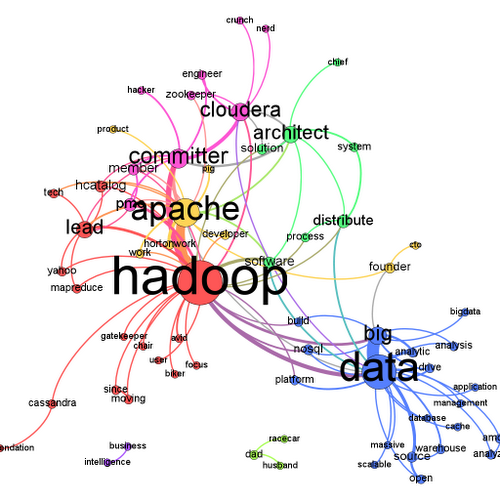As insurers increasingly collect “big data” -- think petabytes and exabytes -- it's now possible to use new data tools and technologies to mine data across three dimensions:
- Large size/long duration -- Traditional data mining usually was limited to three to five years of data. Now you can mine data accumulated over decades.
- Real-time -- With the advent of social media and the different sources, data pours in at ever-increasing speeds.
- Variety of types -- There's more variety of data, both structured and unstructured, that are drastically different from each other.
The ability to master the complexities of capturing, processing and organizing big data has led to several data-centric opportunities for carriers.
Personalized marketing
Big data is playing an increasing role in sales and marketing, and personalization is the hot industry trend. Gathering more information about customers helps insurance companies provide more-personalized products and services. Innovative companies are coming up with new ways to gather more information about customers to personalize their buying experience.
One example is Progressive's Snapshot device, which tracks how often insureds slam on the brakes and how many miles they drive. It lets insurers provide personalized products based on customers’ driving habits. A device like Snapshot captures information from the car every second, collecting data like how often drivers brake, how quickly they accelerate, driving time, average speed, etc. According to
facethefactsusa.org, U.S. drivers log an average of 13,476 miles per year, or 37 miles a day. Big data systems have to process this constant stream of data, coming in every second for however long the user takes to travel 37 miles. Even if only 10% to 15% of customers use the device, it is still a huge amount of data to process. The systems have to process all this information and use predictive models to analyze risks and offer a personalized rate to the user.
People are increasingly using social media to voice their interests, opinions and frustrations, so analyzing social feeds can also help insurance companies better target new customers and respond to existing customers. Using big data, insurers can pinpoint trends, especially of complaints or dissatisfaction with current products and services. Getting ahead of the curve is crucial because bad reviews can spread like wildfire on the web.
Risk management
The wealth of data now available to insurance companies -- from both old and new data sources -- offers ways to better predict risks and trends. Big data can be used to analyze decades of information and identify trends and newer dimensions like demographic change and behavioral evolution.
Process improvement and organizational efficiency
Another popular use is for constant improvement of organizational productivity by recording usage patterns of an organization's internal tools and software. Better understanding of usage trends leads to:
- Creation of more useful software that better fits the organization's needs.
- Avoidance of tools that do not have a good return on investment.
- Identification of manual tasks that can be automated. For example, logs and usage patterns from tools at the agent’s office are important sources of information for understanding customer preferences and agency efficiency.
Automation of manual processes results in significant savings. But in huge, complex organizations, there are almost always overlapping or multiple instances of similar systems and processes that result in redundancy and increased cost of maintenance. Similarly, inadequate and inefficient systems require manual intervention, resulting in bottlenecks, inflated completion times and, most importantly, increased cost.
Using data from internal systems, systems can study critical usage information of various tools and analyze productivity, throughput and turnaround times across a variety of parameters. This can help managers understand inadequacies of existing systems and identify redundancy.
The same data sources are also used to predict higher and leaner load times, so the infrastructure teams can plan for providing appropriate computing resources during critical events. These measures add up quickly, resulting in significant cost savings and improved office efficiency.
Automated learning
While big data technologies now help perform regular data-mining on a much bigger scale, that’s only the beginning. Technology companies are venturing into the fuzzy world of decision-making via artificial intelligence, and a branch of AI called machine learning has greatly advanced.
Machine learning deals with making computer systems learn constantly from data to progressively make more intelligent decisions. Once a machine-learning system has been trained to use specific pattern-analyzing models, it starts to learn from the data and works to identify trends and patterns that have led to specific decisions in the past. Naturally, when more data -- along all of the big data axes -- is provided, the system has a much better chance to learn more, make smarter decisions and avoid the need for manual intervention.
The insurance and financial industries pioneered the commercial application of machine learning techniques by creating computational models for risk analysis and premium calculation. They can predict risks and understand the creditworthiness of a customer by analyzing their past data.
While traditional systems dealt with tens of thousands of data records and took days to crunch through a handful of parameters to analyze risks using, for example, a modified Gaussian copula, the same is now possible in a matter of hours, with two major improvements. First, all available data can be analyzed, and second, risk parameters are unlimited.
Predictive analytics
Machine language technology can use traditional and new data streams to analyze trends and help build models that predict patterns and events with increased accuracy and convert these predictions into opportunities.
Traditional systems generally helped identify reasons for consistent patterns. For example, when analysis of decades of data exposes a consistent trend like an increase in accident reporting during specific periods of the year, results indicated climatic or social causes such as holidays.
With big data and machine learning, predictive analytics now helps create predictions for claims reporting volumes and trends, medical diagnosis for the health insurance industry, new business opportunities and much more.
Fraud Detection
The insurance industry has always been working to devise new ways to detect fraud. With big data technology, it is now possible to look for fraud detection patterns across multiple aspects of the business, including claims, payments and provider-shopping and detect them fairly quickly.
Machine learning systems can now identify new models and patterns of fraud that previously required manual detection. Fraud detection algorithms have improved tremendously with the power of machine learning. Consequently, near-real-time detection and alerting is now possible with big data. This trend promises to only keep getting better.
These six opportunities are just the tip of the iceberg. The entire insurance industry can achieve precise and targeted marketing of products based on history, preferences and social data from customers and competitors. No piece of data, regardless of form, source or size, is insignificant. With big data technology and machine learning tools and algorithms, combined with the limitless power of the cloud computing platform, possibilities are endless.






